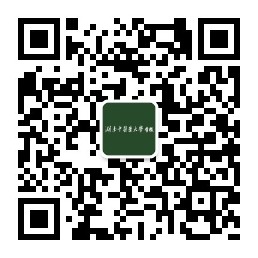| 引用本文: |
陈香梅, 冷文飞.基于“主客交-络病”理论探讨类风湿关节炎的病机及辨治[J].湖南中医药大学学报,2025,45(11):2163-2168[点击复制] |
|
| |
|
|
| 本文已被:浏览 2次 下载 2次 |
| 基于“主客交-络病”理论探讨类风湿关节炎的病机及辨治 |
| 陈香梅,冷文飞 |
| (湖南中医药大学, 湖南 长沙 410208;重庆市垫江县中医院, 重庆 垫江 408300) |
| 摘要: |
| 类风湿关节炎(RA)归属于中医学“痹证”范畴,临床病程迁延,易致关节畸残。既往对其病机的认识多从“邪正相争”“虚实夹杂”阐明,但难以全面揭示其复杂演变规律。本文以“主客交”与“络病”两大理论为切入点,尝试构建RA病机的新型理论框架。“主客交”理论突出正邪消长、虚实转化的动态特征,“络病”理论揭示邪阻络脉、气血痹滞的持久机制。二者结合,可系统阐释RA从外邪侵袭、正虚邪盛到络脉痹阻的时空演化路径,揭示其由急性炎症向慢性顽痹演变的内在规律。基于此,本文提出RA的辨治思路应随病程分期而转变:早期以疏风祛湿、通经活络为主,中期注重清热化瘀、调营通络,后期强调扶正补虚、通络祛瘀。该理论框架在深化RA中医病机认知的同时,亦为辨证论治提供了新的理论支撑,体现了中医病机学说与现代免疫炎症机制融合发展的创新价值。 |
| 关键词: 类风湿关节炎 主客交 络病 辨证论治 炎症 |
| DOI:10.3969/j.issn.1674-070X.2025.11.019 |
| 投稿时间:2025-07-17 |
| 基金项目:重庆市中医药重点学科建设项目(渝中医[2021]16号); 重庆市垫江县科技项目(djkjxm2023shmskjcxywzd09)。 |
|
| Pathogenesis, pattern differentiation and treatment of rheumatoid arthritis based on the theories of “host-guest contention” and “collateral disease” |
| CHEN Xiangmei, LENG Wenfei |
| (Hunan University of Chinese Medicine, Changsha, Hunan 410208, China;Chongqing Dianjiang County Hospital of Chinese Medicine, Dianjiang, Chongqing 408300, China) |
| Abstract: |
| Rheumatoid arthritis(RA), categorized as "Bi-impediment disorders" in TCM, is characterized by a prolonged and relapsing clinical course that often leads to joint deformities and disability. Previous interpretations of its pathogenesis have mostly been explained in terms of "the struggle between healthy qi and pathogenic factors" and "the combined deficiency and excess", but failed to fully elucidate the complex and evolving nature of the disease process. Taking the theories of "host-guest contention" and "collateral disease" as the starting points, the paper attempts to construct a new theoretical framework for the pathogenesis of RA.The "host-guest contention" theory emphasizes the dynamic features of waxing and waning of healthy qi and pathogenic factors, as well as the transformation between deficiency and excess, whereas the "collateral disease" theory reveals the persistent pathological mechanism by which pathogenic factors obstruct the collaterals, leading to stagnation of qi and blood. The integration of these two theories provides a systematic explanation of the spatiotemporal evolution of RA, thereby uncovering the intrinsic pattern of transition from acute inflammation to chronic refractory Bi-impediment disease. Based on this framework, this paper proposes a stage-based approach to pattern differentiation and treatment of RA: in the early stage, treatment should focus on removing wind,eliminating dampness, as well as unblocking and harmonizing the meridians; in the middle stage, it should emphasize clearing heat and transforming stasis, as well as regulating the Ying nutrients and unblocking collaterals; and in the late stage, the priority should shift to reinforcing healthy qi and tonifying deficiency, and unblocking collaterals while removing stasis. This theoretical model not only deepens the understanding of RA pathogenesis from the perspective of TCM, but also provides a new theoretical foundation for its pattern differentiation and treatment. It reflects the innovative integration of CM pathogenesis theories with modern immunoinflammatory mechanisms. |
| Key words: rheumatoid arthritis host-guest contention collateral disease pattern differentiation and treatment inflammation |
|

二维码(扫一下试试看!) |
|
|
|
|




